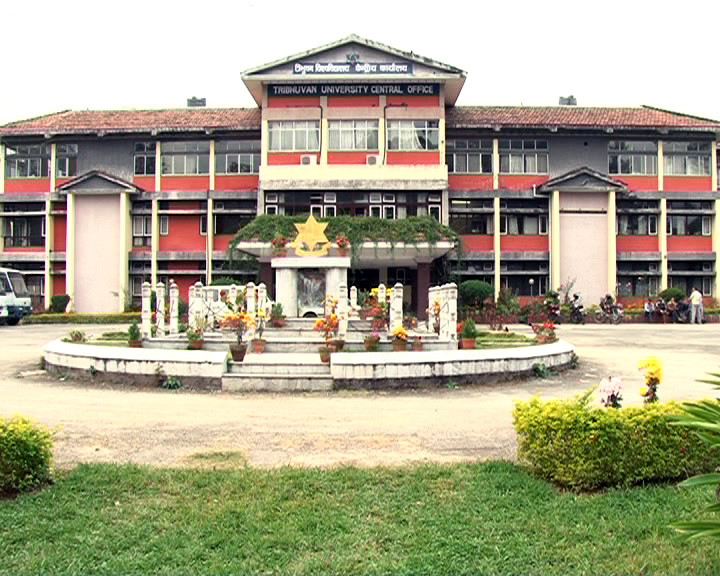|
Balkumari College
Balkumari College ( ne, बालकुमारी कलेज) is an educational institution of higher learning, located in Narayangarh, Chitwan Bharatpur (, ne, भरतपुर, ) is a city in southern central Nepal. It is the third most populous city of Nepal after Kathmandu and Pokhara with 369,377 inhabitants in 2021. It is also the second largest metropolitan city in Nepal by ..., Nepal. It was established on 18 September 1986. Balkumari College is affiliated to Tribhuwan University for bachelor's degree and to NEB for 11 & 12 grade. Courses offered * 10+2 in Science, Management, Hotel Management, ICTE in Education, Education, Humanities Stream (Higher Secondary Education Board (HSEB), Sano Thimi, Nepal) * Bachlelor in Science in Microbiology, Bachelor in Environmental Science, Bachelor in Hotel Management, Bachelor in Information Management, Bachelor in Business Studies, Bachelor in Education, Bachelor in Education Information Communication Technology, Bachelo ... [...More Info...] [...Related Items...] OR: [Wikipedia] [Google] [Baidu] |
National Examination Board (Nepal)
'National Examinations Board ( ne, राष्ट्रिय परीक्षा बोर्ड) is the board that organizes the Higher Secondary examination and education in Nepal. It is transformed from previous Higher Secondary Education Board (HSEB) according to the Education Act (8th amendment) of 2073 B.S. It is located in Sanothimi, Bhaktapur. It is the main body that organises board exam. Its main aim is to prepare skilled human power for the development of the country. National Examination Board is responsible for conducting and managing 12th grade-Higher Secondary exam and 10th grade SEE Exam. The jurisdiction of the previous Higher Secondary Education Board (HSEB) was limited to 11th and 12th-grade high school (10+2) only. HSEB was established in 1989 under the Higher Secondary Education Act. See also * School Leaving Certificate A secondary school leaving qualification is a document signifying that the holder has fulfilled any secondary education r ... [...More Info...] [...Related Items...] OR: [Wikipedia] [Google] [Baidu] |
Tribhuvan University
Tribhuvan University (TU; ne, त्रिभुवन विश्वविद्यालय) is a public university located in Kirtipur, Kathmandu. Established in 1959, TU is the oldest university in Nepal. In terms of enrollment, it is the 12th largest university in the world. The college offers 1000 undergraduate and 500 postgraduate programs across a wide range of disciplines. Additionally, the institution has 30 constituent campuses and over 600 affiliated colleges across the country. Because it is government-funded, the tuition fees are less expensive than those of private (affiliated) college campuses. History Established on 25 June 1959 (or 11 Ashar 2016 BS), Tribhuvan University is the oldest and largest university in Nepal. The university was named after the late King Tribhuvan. In its early years, all the postgraduate classes were held at Tripureshwor Campus. The administrative office was also located in Tripureshwor. It was only in 1967 that the university w ... [...More Info...] [...Related Items...] OR: [Wikipedia] [Google] [Baidu] |
Nepal
Nepal (; ne, नेपाल ), formerly the Federal Democratic Republic of Nepal ( ne, सङ्घीय लोकतान्त्रिक गणतन्त्र नेपाल ), is a landlocked country in South Asia. It is mainly situated in the Himalayas, but also includes parts of the Indo-Gangetic Plain, bordering the Tibet Autonomous Region of China to the north, and India in the south, east, and west, while it is narrowly separated from Bangladesh by the Siliguri Corridor, and from Bhutan by the Indian state of Sikkim. Nepal has a diverse geography, including fertile plains, subalpine forested hills, and eight of the world's ten tallest mountains, including Mount Everest, the highest point on Earth. Nepal is a multi-ethnic, multi-lingual, multi-religious and multi-cultural state, with Nepali as the official language. Kathmandu is the nation's capital and the largest city. The name "Nepal" is first recorded in texts from the Vedic period of the ... [...More Info...] [...Related Items...] OR: [Wikipedia] [Google] [Baidu] |
English Language
English is a West Germanic language of the Indo-European language family, with its earliest forms spoken by the inhabitants of early medieval England. It is named after the Angles, one of the ancient Germanic peoples that migrated to the island of Great Britain. Existing on a dialect continuum with Scots, and then closest related to the Low Saxon and Frisian languages, English is genealogically West Germanic. However, its vocabulary is also distinctively influenced by dialects of France (about 29% of Modern English words) and Latin (also about 29%), plus some grammar and a small amount of core vocabulary influenced by Old Norse (a North Germanic language). Speakers of English are called Anglophones. The earliest forms of English, collectively known as Old English, evolved from a group of West Germanic ( Ingvaeonic) dialects brought to Great Britain by Anglo-Saxon settlers in the 5th century and further mutated by Norse-speaking Viking settlers starting in ... [...More Info...] [...Related Items...] OR: [Wikipedia] [Google] [Baidu] |
Nepali Language
Nepali (; , ) is an Indo-Aryan language native to the Himalayas region of South Asia. It is the official, and most widely spoken, language of Nepal, where it also serves as a '' lingua franca''. Nepali has official status in the Indian state of Sikkim and in the Gorkhaland Territorial Administration of West Bengal. It is spoken by about a quarter of Bhutan's population. Nepali also has a significant number of speakers in the states of Arunachal Pradesh, Assam, Himachal Pradesh, Manipur, Meghalaya, Mizoram and Uttarakhand. In Myanmar it is spoken by the Burmese Gurkhas. The Nepali diaspora in the Middle East, Brunei, Australia and worldwide also use the language. Nepali is spoken by approximately 16 million native speakers and another 9 million as a second language. Nepali is commonly classified within the Eastern Pahari group of the Northern zone of Indo-Aryan. The language originated from the Sinja Valley, Karnali Province then the capital city of the Khasa Ki ... [...More Info...] [...Related Items...] OR: [Wikipedia] [Google] [Baidu] |
Narayangarh, Chitwan
Bharatpur (, ne, भरतपुर, ) is a city in southern central Nepal. It is the third most populous city of Nepal after Kathmandu and Pokhara with 369,377 inhabitants in 2021. It is also the second largest metropolitan city in Nepal by area. It is the district headquarter of the Chitwan District. Bharatpur is one of the fastest-growing cities in Nepal. It lies on the western bank of the Narayani River and serves as a commercial center of the Chitwan district and the central region of Nepal. Most of the shopping area lies in the area of Narayangadh, while government offices, hospitals and colleges are situated in other parts of the city, including Nepal's premier cancer hospital, B.P Koirala Memorial Cancer Hospital. In March 2017, Bharatpur was declared a metropolitan city after Narayani Municipality, Chitrawan Municipality and Kabilas Village were merged into it. Economy The economy of Bharatpur is traditionally based on agriculture. The city also holds a smal ... [...More Info...] [...Related Items...] OR: [Wikipedia] [Google] [Baidu] |
Educational Institutions Established In 1986
Education is a purposeful activity directed at achieving certain aims, such as transmitting knowledge or fostering skills and character traits. These aims may include the development of understanding, rationality, kindness, and honesty. Various researchers emphasize the role of critical thinking in order to distinguish education from indoctrination. Some theorists require that education results in an improvement of the student while others prefer a value-neutral definition of the term. In a slightly different sense, education may also refer, not to the process, but to the product of this process: the mental states and dispositions possessed by educated people. Education originated as the transmission of cultural heritage from one generation to the next. Today, educational goals increasingly encompass new ideas such as the liberation of learners, skills needed for modern society, empathy, and complex vocational skills. Types of education are commonly divided into form ... [...More Info...] [...Related Items...] OR: [Wikipedia] [Google] [Baidu] |




